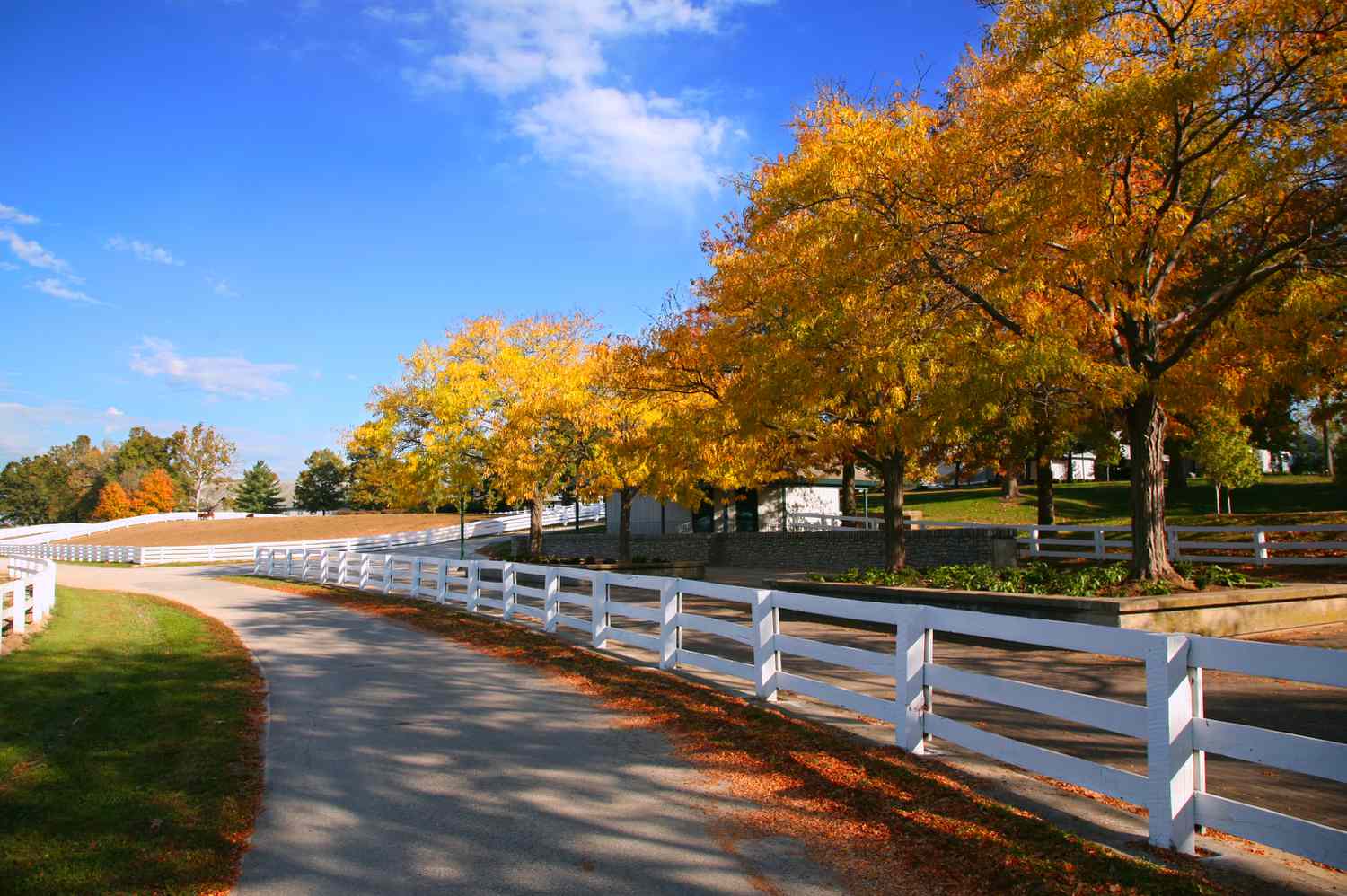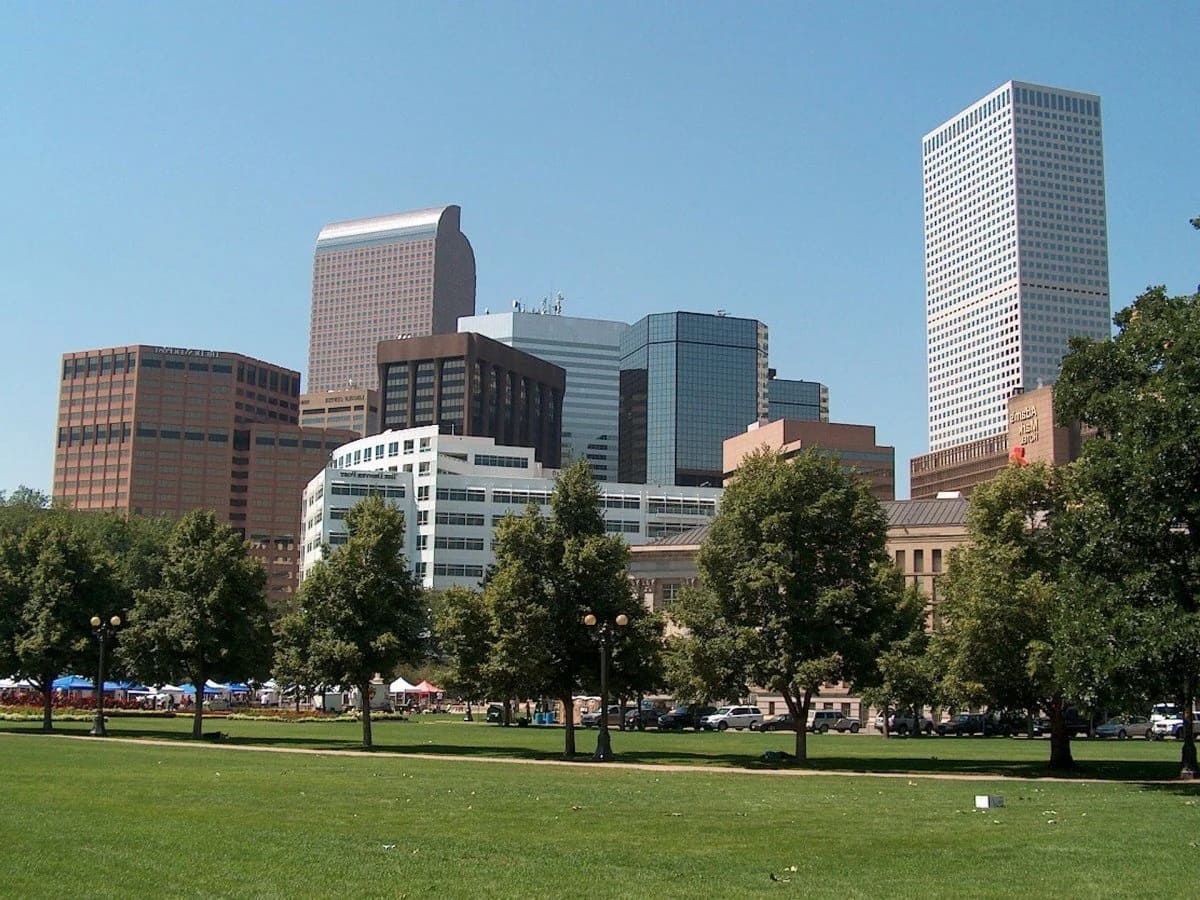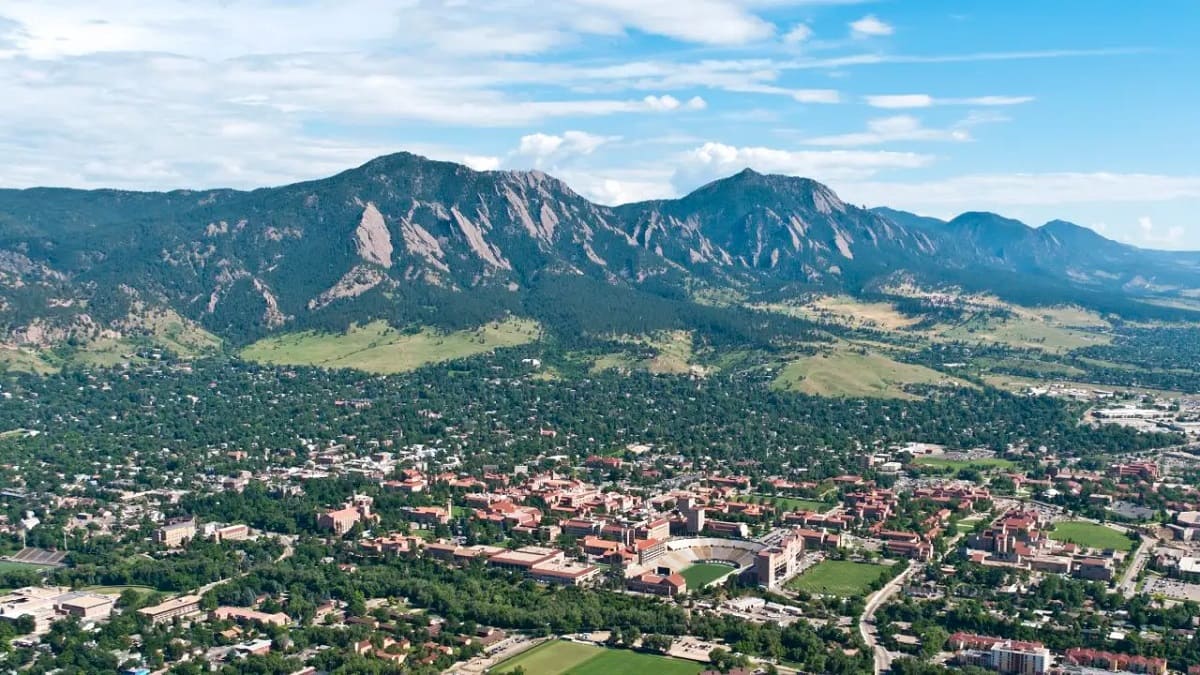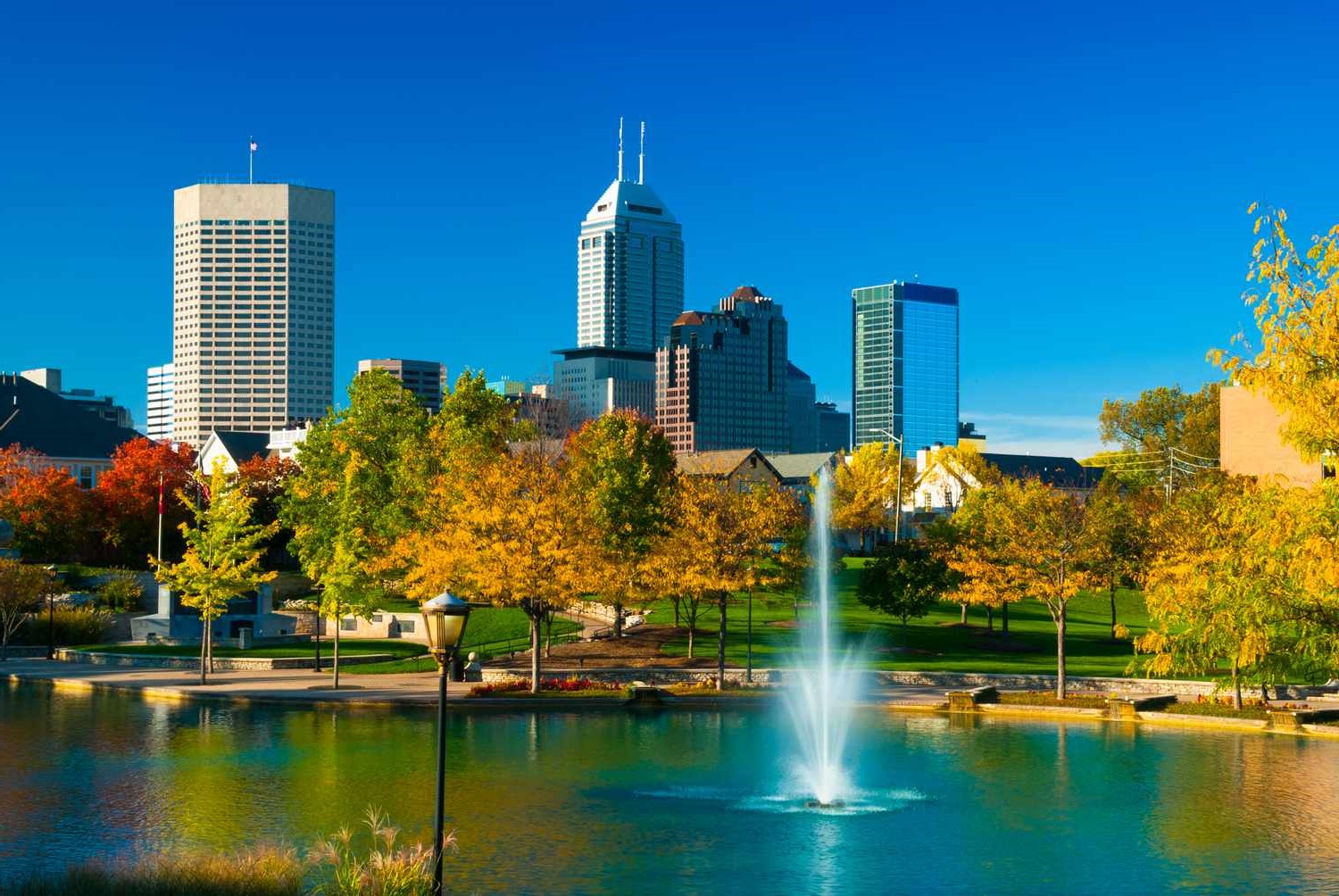Home>Weather and Climate>Atlanta Monthly Weather: A Comprehensive Guide To Atlanta’s Climate Throughout The Year


Weather and Climate
Atlanta Monthly Weather: A Comprehensive Guide To Atlanta’s Climate Throughout The Year
Published: March 7, 2024
Discover the diverse weather and climate of Atlanta with our comprehensive guide. Learn about the city's seasonal variations and weather patterns throughout the year.
(Many of the links in this article redirect to a specific reviewed product. Your purchase of these products through affiliate links helps to generate commission for Temperatures.com, at no extra cost. Learn more)
Table of Contents
- Introduction
- Understanding Atlanta's Climate
- Weather Patterns in January
- Weather Patterns in February
- Weather Patterns in March
- Weather Patterns in April
- Weather Patterns in May
- Weather Patterns in June
- Weather Patterns in July
- Weather Patterns in August
- Weather Patterns in September
- Weather Patterns in October
- Weather Patterns in November
- Weather Patterns in December
- Conclusion
Introduction
Atlanta, the capital city of Georgia, is known for its diverse and dynamic climate. From warm summers to mild winters, Atlanta experiences a range of weather patterns throughout the year. Understanding the nuances of Atlanta's climate is essential for residents and visitors alike, as it allows for better preparation and planning for outdoor activities, events, and travel.
In this comprehensive guide, we will delve into the monthly weather patterns in Atlanta, providing valuable insights into the city's climate throughout the year. By exploring the unique characteristics of each month, we aim to offer a detailed understanding of Atlanta's weather, empowering readers to make informed decisions based on the forecasted conditions.
Whether you're a local resident seeking to anticipate the upcoming weather or a traveler planning a visit to Atlanta, this guide will serve as a valuable resource for gaining a deeper understanding of the city's climate. Join us on this journey through the changing seasons of Atlanta, where we will uncover the distinct weather patterns that shape the city's atmosphere month by month.
Understanding Atlanta's Climate
Atlanta's climate is characterized by its subtropical and humid conditions, influenced by its inland location and elevation. The city experiences four distinct seasons, each contributing to the overall climatic diversity. Understanding the intricacies of Atlanta's climate involves recognizing the impact of various factors, including geography, topography, and regional weather patterns.
Geographically, Atlanta is situated in the southeastern region of the United States, positioning it within the humid subtropical climate zone. This classification results in hot, humid summers and mild winters, with ample precipitation throughout the year. The city's elevation, averaging around 1,050 feet above sea level, further contributes to its climate, influencing temperature variations and weather patterns.
The interaction of warm, moist air from the Gulf of Mexico and cooler, drier air from the north shapes Atlanta's weather. This collision of air masses often leads to fluctuating conditions, including thunderstorms, which are prevalent during the summer months. Additionally, the city's proximity to the Appalachian Mountains can impact its climate, influencing wind patterns and contributing to localized weather phenomena.
The annual precipitation in Atlanta is relatively evenly distributed across the months, with occasional variations due to seasonal weather systems. The city experiences an average of 50 inches of rainfall annually, with the highest precipitation occurring during the summer months. This consistent rainfall contributes to the lush greenery and vibrant foliage that characterize Atlanta's landscape.
Understanding Atlanta's climate also involves acknowledging the impact of urbanization on local weather patterns. The presence of concrete structures and asphalt surfaces in urban areas can lead to the formation of urban heat islands, causing higher temperatures within the city compared to surrounding rural areas. This phenomenon contributes to the urban microclimate, influencing temperature gradients and atmospheric conditions within Atlanta.
By comprehending the complex interplay of geographical, meteorological, and urban factors, individuals can gain a deeper insight into Atlanta's climate. This understanding enables residents and visitors to anticipate and adapt to the city's weather variations, fostering a greater appreciation for the dynamic climatic characteristics that define Atlanta throughout the year.
Weather Patterns in January
In January, Atlanta experiences the peak of winter, characterized by cool temperatures and occasional precipitation. As the city transitions into the new year, residents and visitors can expect a blend of chilly days and mild spells, creating a diverse weather landscape.
The average high temperatures in January hover around 52°F (11°C), while the average lows dip to approximately 34°F (1°C). These cooler temperatures contribute to a refreshing atmosphere, inviting locals and tourists to embrace the winter ambiance. However, it's essential to prepare for the occasional cold snaps that can bring temperatures below freezing, prompting the need for appropriate cold-weather attire.
Precipitation in January typically manifests as light rain or occasional snow flurries, adding a touch of wintry charm to the city. The average monthly rainfall stands at around 4 inches, with the possibility of snowfall occurring on rare occasions. While snow accumulation is infrequent, the sight of snowflakes gently descending upon Atlanta's urban landscape creates a picturesque scene, captivating residents and visitors alike.
The daylight hours in January are relatively shorter, with an average of 10 hours of daylight, allowing for ample opportunities to explore the city's attractions and engage in seasonal activities. The shorter days, coupled with the cooler temperatures, contribute to a cozy ambiance, making indoor gatherings and cultural events particularly appealing during this time of year.
January also brings occasional overcast skies, contributing to a serene and tranquil atmosphere across the city. The cloud cover adds a touch of drama to Atlanta's skyline, creating captivating vistas that showcase the city's beauty in a different light.
As January unfolds, Atlanta's weather sets the stage for a winter experience that blends moments of briskness with comfortable conditions, offering a diverse and engaging climate for all to enjoy. Whether savoring the crisp air during outdoor excursions or seeking warmth and comfort indoors, the weather patterns in January contribute to the unique charm of Atlanta's winter season.
Weather Patterns in February
In February, Atlanta experiences a transition from the peak of winter to the gradual emergence of spring, marking a period of fluctuating weather patterns and evolving climatic conditions. As the city bids farewell to the coldest days of the year, February introduces a sense of anticipation for the upcoming seasonal shift.
The average high temperatures in February range around 56°F (13°C), signaling a gradual but noticeable rise compared to the previous month. While the days become milder, the evenings and early mornings retain a touch of coolness, creating a balanced and comfortable outdoor environment. This transition in temperatures sets the stage for a dynamic blend of indoor and outdoor activities, catering to diverse preferences and interests.
Precipitation in February remains moderate, with an average monthly rainfall of approximately 5 inches. The occasional rain showers contribute to the rejuvenation of Atlanta's natural surroundings, fostering the growth of early spring foliage and enhancing the city's scenic beauty. While snowfall is rare during this time, the possibility of light flurries adds an element of surprise to the weather, captivating residents and visitors with fleeting moments of wintry enchantment.
The daylight hours gradually extend in February, offering an average of 11 hours of daylight, providing ample opportunities for exploration and leisure. The increasing daylight duration encourages outdoor pursuits, such as nature walks, park visits, and recreational activities, allowing individuals to embrace the evolving seasonal ambiance.
February also brings a mix of clear skies and partly cloudy conditions, creating visually captivating panoramas across Atlanta. The interplay of sunlight and clouds contributes to stunning sunrises and sunsets, casting a warm and inviting glow over the city's skyline. These atmospheric displays add a touch of natural splendor to the urban landscape, enhancing the overall aesthetic appeal of Atlanta during this transitional period.
As February unfolds, Atlanta's weather patterns reflect the city's transition from winter to spring, offering a harmonious blend of climatic elements that cater to a diverse range of preferences and activities. Whether reveling in the milder temperatures, embracing the occasional rain showers, or savoring the evolving natural scenery, February sets the stage for a captivating prelude to the forthcoming spring season.
Weather Patterns in March
March heralds the arrival of spring in Atlanta, marking a significant transition in the city's weather patterns and overall atmospheric dynamics. As nature awakens from the winter slumber, Atlanta experiences a notable shift in temperatures, daylight hours, and natural scenery, creating a captivating backdrop for residents and visitors alike.
The average high temperatures in March begin to climb, reaching around 64°F (18°C), signaling a noticeable departure from the cooler winter conditions. The gradual warming of the air fosters a sense of rejuvenation and vitality, encouraging outdoor exploration and engagement with the city's vibrant surroundings. The pleasant temperatures provide an ideal setting for various outdoor activities, from leisurely strolls in parks to al fresco dining experiences, allowing individuals to embrace the burgeoning spring ambiance.
Precipitation in March remains moderate, with an average monthly rainfall of approximately 4 inches. The occasional rain showers contribute to the nourishment of Atlanta's natural landscape, fostering the blooming of colorful flowers and the emergence of lush greenery. The city's parks and gardens come to life with vibrant hues, offering picturesque settings for leisurely walks and tranquil respites amidst nature's seasonal transformation.
The daylight hours continue to extend in March, providing an average of 12 hours of daylight, allowing for increased opportunities to bask in the sun's warmth and partake in outdoor pursuits. The longer days create an inviting environment for recreational activities, including picnics, outdoor sports, and cultural events, as Atlanta's residents and visitors embrace the extended daylight hours and the accompanying sense of vitality.
March also brings a mix of clear skies and partly cloudy conditions, accentuating the city's natural beauty with captivating vistas and stunning sunlit panoramas. The interplay of sunlight and clouds casts a warm and inviting glow over Atlanta's urban landscape, enhancing the visual allure of the city during this transitional period. The atmospheric displays contribute to a sense of optimism and renewal, reflecting the transformative spirit of the spring season.
As March unfolds, Atlanta's weather patterns encapsulate the essence of seasonal rebirth and renewal, offering a harmonious blend of climatic elements that celebrate the arrival of spring. Whether reveling in the mild temperatures, embracing the occasional rain showers, or savoring the vibrant natural scenery, March sets the stage for a captivating prelude to the blossoming splendor of the forthcoming spring season.
Weather Patterns in April
As April unfolds, Atlanta experiences the full bloom of spring, marking a period of vibrant transformation in the city's weather patterns and natural landscape. The arrival of April heralds a notable shift in temperatures, daylight hours, and atmospheric conditions, creating an enchanting backdrop for residents and visitors alike.
The average high temperatures in April rise to approximately 72°F (22°C), signaling a significant departure from the cooler conditions of the preceding months. The gentle warmth of the spring sun infuses the air with a sense of vitality, inviting individuals to embrace the outdoors and partake in a myriad of seasonal activities. Whether engaging in outdoor sports, leisurely walks, or cultural events, the mild temperatures create an ideal setting for diverse pursuits, catering to a wide range of preferences and interests.
Precipitation in April remains moderate, with an average monthly rainfall of around 3 inches. The occasional rain showers contribute to the continued rejuvenation of Atlanta's natural surroundings, fostering the lush growth of foliage and the blossoming of vibrant flowers. The city's parks and green spaces become adorned with a kaleidoscope of colors, offering captivating settings for relaxation and appreciation of nature's seasonal splendor.
The daylight hours further extend in April, providing an average of 13 hours of daylight, allowing for ample opportunities to revel in the sun's radiance and partake in outdoor leisure. The longer days create an inviting environment for various recreational pursuits, from picnics and outdoor concerts to nature photography and family gatherings, as Atlanta's residents and visitors immerse themselves in the extended daylight hours and the accompanying sense of liveliness.
April also brings a mix of clear skies and partly cloudy conditions, accentuating the city's natural beauty with stunning vistas and captivating sunlit panoramas. The interplay of sunlight and clouds casts a warm and inviting glow over Atlanta's urban landscape, enhancing the visual allure of the city during this transformative period. The atmospheric displays contribute to a sense of optimism and renewal, reflecting the vibrant spirit of the spring season.
As April unfolds, Atlanta's weather patterns encapsulate the essence of seasonal vibrancy and rejuvenation, offering a harmonious blend of climatic elements that celebrate the full bloom of spring. Whether reveling in the mild temperatures, embracing the occasional rain showers, or savoring the resplendent natural scenery, April sets the stage for a captivating celebration of nature's renewal and the flourishing beauty of the spring season.
Weather Patterns in May
In May, Atlanta experiences the full embrace of spring, as the city's weather undergoes a remarkable transition characterized by a surge in temperatures, extended daylight hours, and the flourishing of nature's vibrant tapestry. As the final traces of spring emerge, May sets the stage for a captivating display of climatic elements that define the city's atmospheric landscape.
The average high temperatures in May soar to around 79°F (26°C), marking a significant rise from the preceding months. The warmth of the sun envelops Atlanta in a gentle embrace, creating an inviting environment for outdoor pursuits and leisure activities. Whether indulging in al fresco dining, exploring the city's parks and botanical gardens, or partaking in outdoor events, the mild and pleasant temperatures of May offer an ideal backdrop for a diverse range of experiences.
Precipitation in May remains moderate, with an average monthly rainfall of approximately 3 inches. The occasional rain showers contribute to the continued rejuvenation of Atlanta's natural surroundings, sustaining the lush greenery and vibrant blooms that adorn the city's outdoor spaces. The city's parks and green expanses become a haven of tranquility and natural beauty, providing serene settings for relaxation and appreciation of the seasonal splendor.
The daylight hours reach their peak in May, offering an average of 14 hours of daylight, allowing ample time for residents and visitors to immerse themselves in the city's outdoor offerings. The extended daylight hours create an inviting atmosphere for various activities, from morning jogs and afternoon picnics to evening strolls and outdoor cultural performances, as Atlanta's urban landscape comes alive with the energy and vibrancy of the season.
May also brings a mix of clear skies and partly cloudy conditions, accentuating the city's natural beauty with stunning vistas and captivating sunlit panoramas. The interplay of sunlight and clouds casts a warm and inviting glow over Atlanta's urban landscape, enhancing the visual allure of the city during this transformative period. The atmospheric displays contribute to a sense of optimism and renewal, reflecting the vibrant spirit of the spring season.
As May unfolds, Atlanta's weather patterns encapsulate the essence of seasonal vibrancy and rejuvenation, offering a harmonious blend of climatic elements that celebrate the full bloom of spring. Whether reveling in the mild temperatures, embracing the occasional rain showers, or savoring the resplendent natural scenery, May sets the stage for a captivating celebration of nature's renewal and the flourishing beauty of the spring season.
Weather Patterns in June
June heralds the arrival of summer in Atlanta, marking a significant shift in the city's weather patterns and overall atmospheric dynamics. As the sun reaches its zenith and the days lengthen, Atlanta experiences a notable transition in temperatures, daylight hours, and natural scenery, creating a captivating backdrop for residents and visitors alike.
The average high temperatures in June rise to approximately 86°F (30°C), signaling the onset of warmer and sunnier days. The gentle warmth of the summer sun infuses the air with a sense of energy and vitality, inviting individuals to embrace the outdoors and partake in a myriad of seasonal activities. Whether indulging in outdoor dining, exploring the city's parks and recreational areas, or attending outdoor events, the balmy temperatures create an ideal setting for diverse pursuits, catering to a wide range of preferences and interests.
Precipitation in June remains moderate, with an average monthly rainfall of approximately 4 inches. The occasional afternoon thunderstorms contribute to the replenishment of Atlanta's natural surroundings, sustaining the lush greenery and vibrant blooms that adorn the city's outdoor spaces. The city's parks and green expanses become a haven of tranquility and natural beauty, providing serene settings for relaxation and appreciation of the seasonal splendor.
The daylight hours reach their peak in June, offering an average of 14 hours of daylight, allowing ample time for residents and visitors to immerse themselves in the city's outdoor offerings. The extended daylight hours create an inviting atmosphere for various activities, from early morning fitness routines and midday picnics to evening strolls and outdoor cultural performances, as Atlanta's urban landscape comes alive with the energy and vibrancy of the season.
June also brings a mix of clear skies and occasional partly cloudy conditions, accentuating the city's natural beauty with stunning vistas and captivating sunlit panoramas. The interplay of sunlight and clouds casts a warm and inviting glow over Atlanta's urban landscape, enhancing the visual allure of the city during this vibrant period. The atmospheric displays contribute to a sense of optimism and vitality, reflecting the spirited essence of the summer season.
As June unfolds, Atlanta's weather patterns encapsulate the essence of seasonal vibrancy and outdoor liveliness, offering a harmonious blend of climatic elements that celebrate the arrival of summer. Whether reveling in the warm temperatures, embracing the occasional afternoon thunderstorms, or savoring the resplendent natural scenery, June sets the stage for a captivating celebration of nature's abundance and the vibrant beauty of the summer season.
Weather Patterns in July
In July, Atlanta experiences the peak of summer, ushering in a period of warm temperatures, extended daylight hours, and a vibrant atmosphere. As the city basks in the full splendor of the summer season, July showcases a distinctive array of weather patterns that define Atlanta's climatic landscape.
The average high temperatures in July soar to approximately 89°F (32°C), marking the warmest period of the year. The sun's radiant embrace envelops the city in a blanket of warmth, creating an inviting environment for outdoor activities and leisure pursuits. Whether engaging in water-based recreation, seeking shade in the city's parks, or enjoying outdoor festivals and events, the balmy temperatures offer an ideal backdrop for a diverse range of summer experiences.
Precipitation in July remains moderate, with an average monthly rainfall of approximately 5 inches. The occasional afternoon thunderstorms contribute to the replenishment of Atlanta's natural surroundings, sustaining the lush greenery and vibrant blooms that adorn the city's outdoor spaces. The city's parks and green expanses become a haven of tranquility and natural beauty, providing serene settings for relaxation and appreciation of the seasonal splendor.
The daylight hours reach their peak in July, offering an average of 14 hours of daylight, allowing ample time for residents and visitors to immerse themselves in the city's outdoor offerings. The extended daylight hours create an inviting atmosphere for various activities, from early morning fitness routines and midday picnics to evening strolls and outdoor cultural performances, as Atlanta's urban landscape comes alive with the energy and vibrancy of the season.
July also brings a mix of clear skies and occasional partly cloudy conditions, accentuating the city's natural beauty with stunning vistas and captivating sunlit panoramas. The interplay of sunlight and clouds casts a warm and inviting glow over Atlanta's urban landscape, enhancing the visual allure of the city during this vibrant period. The atmospheric displays contribute to a sense of optimism and vitality, reflecting the spirited essence of the summer season.
As July unfolds, Atlanta's weather patterns encapsulate the essence of seasonal vibrancy and outdoor liveliness, offering a harmonious blend of climatic elements that celebrate the peak of summer. Whether reveling in the warm temperatures, embracing the occasional afternoon thunderstorms, or savoring the resplendent natural scenery, July sets the stage for a captivating celebration of nature's abundance and the vibrant beauty of the summer season.
Weather Patterns in August
In August, Atlanta experiences the continuation of summer, characterized by warm temperatures, extended daylight hours, and a vibrant atmosphere. As the city revels in the peak of the summer season, August showcases a distinctive array of weather patterns that define Atlanta's climatic landscape.
The average high temperatures in August reach approximately 88°F (31°C), maintaining the warmth that permeates the city throughout the summer months. The sun's radiant embrace creates an inviting environment for outdoor activities and leisure pursuits. Whether engaging in water-based recreation, seeking shade in the city's parks, or enjoying outdoor festivals and events, the balmy temperatures offer an ideal backdrop for a diverse range of summer experiences.
Precipitation in August remains moderate, with an average monthly rainfall of approximately 4 inches. The occasional afternoon thunderstorms contribute to the replenishment of Atlanta's natural surroundings, sustaining the lush greenery and vibrant blooms that adorn the city's outdoor spaces. The city's parks and green expanses continue to provide serene settings for relaxation and appreciation of the seasonal splendor.
The daylight hours remain ample in August, offering an average of 13 hours of daylight, allowing residents and visitors to immerse themselves in the city's outdoor offerings. The extended daylight hours create an inviting atmosphere for various activities, from morning fitness routines and midday picnics to evening strolls and outdoor cultural performances, as Atlanta's urban landscape remains vibrant and energetic.
August also brings a mix of clear skies and occasional partly cloudy conditions, accentuating the city's natural beauty with stunning vistas and captivating sunlit panoramas. The interplay of sunlight and clouds casts a warm and inviting glow over Atlanta's urban landscape, enhancing the visual allure of the city during this vibrant period. The atmospheric displays contribute to a sense of optimism and vitality, reflecting the spirited essence of the summer season.
As August unfolds, Atlanta's weather patterns encapsulate the essence of seasonal vibrancy and outdoor liveliness, offering a harmonious blend of climatic elements that celebrate the peak of summer. Whether reveling in the warm temperatures, embracing the occasional afternoon thunderstorms, or savoring the resplendent natural scenery, August sets the stage for a captivating celebration of nature's abundance and the vibrant beauty of the summer season.
Weather Patterns in September
As September unfolds, Atlanta experiences a gradual transition from the peak of summer to the onset of autumn, marking a period of shifting weather patterns and evolving climatic conditions. The month brings a sense of anticipation for the forthcoming fall season, accompanied by notable changes in temperatures, daylight hours, and natural scenery.
The average high temperatures in September begin to moderate, hovering around 81°F (27°C), signaling a departure from the peak summer heat. The gradual cooling of the air fosters a sense of transition, creating a comfortable and inviting outdoor environment. The milder temperatures provide an ideal setting for various activities, from outdoor dining and nature walks to cultural events, catering to diverse preferences and interests.
Precipitation in September remains moderate, with an average monthly rainfall of approximately 4 inches. The occasional afternoon showers contribute to the continued nourishment of Atlanta's natural surroundings, sustaining the greenery and botanical beauty that adorn the city's outdoor spaces. The parks and green expanses become tranquil havens, offering serene settings for relaxation and appreciation of the evolving seasonal splendor.
The daylight hours gradually begin to shorten in September, providing an average of 12 hours of daylight, marking the gradual transition towards the autumnal equinox. The changing daylight duration creates a balanced atmosphere for outdoor pursuits, from morning activities to evening gatherings, allowing residents and visitors to embrace the evolving seasonal ambiance.
September also brings a mix of clear skies and occasional partly cloudy conditions, accentuating the city's natural beauty with captivating vistas and sunlit panoramas. The interplay of sunlight and clouds casts a warm and inviting glow over Atlanta's urban landscape, enhancing the visual allure of the city during this transitional period. The atmospheric displays contribute to a sense of anticipation and renewal, reflecting the shifting spirit of the impending fall season.
As September unfolds, Atlanta's weather patterns encapsulate the essence of seasonal transition and anticipation, offering a harmonious blend of climatic elements that mark the gradual shift from summer to fall. Whether reveling in the milder temperatures, embracing the occasional afternoon showers, or savoring the evolving natural scenery, September sets the stage for a captivating prelude to the forthcoming autumnal beauty and the changing atmospheric dynamics.
Weather Patterns in October
In October, Atlanta experiences the gradual transition from the lingering warmth of late summer to the crisp embrace of autumn, marking a period of shifting weather patterns and evolving climatic conditions. As the city bids farewell to the peak of summer, October introduces a sense of anticipation for the forthcoming fall season, accompanied by notable changes in temperatures, daylight hours, and natural scenery.
The average high temperatures in October begin to moderate further, settling around 71°F (22°C), signaling a departure from the lingering warmth of the previous months. The gradual cooling of the air fosters a sense of transition, creating a comfortable and inviting outdoor environment. The milder temperatures provide an ideal setting for various activities, from outdoor dining and nature walks to cultural events, catering to diverse preferences and interests.
Precipitation in October remains moderate, with an average monthly rainfall of approximately 3 inches. The occasional showers contribute to the continued nourishment of Atlanta's natural surroundings, sustaining the greenery and botanical beauty that adorn the city's outdoor spaces. The parks and green expanses become tranquil havens, offering serene settings for relaxation and appreciation of the evolving seasonal splendor.
The daylight hours continue to shorten in October, providing an average of 11 hours of daylight, marking the gradual transition towards the winter solstice. The changing daylight duration creates a balanced atmosphere for outdoor pursuits, from morning activities to evening gatherings, allowing residents and visitors to embrace the evolving seasonal ambiance.
October also brings a mix of clear skies and occasional partly cloudy conditions, accentuating the city's natural beauty with captivating vistas and sunlit panoramas. The interplay of sunlight and clouds casts a warm and inviting glow over Atlanta's urban landscape, enhancing the visual allure of the city during this transitional period. The atmospheric displays contribute to a sense of anticipation and renewal, reflecting the shifting spirit of the impending fall season.
As October unfolds, Atlanta's weather patterns encapsulate the essence of seasonal transition and anticipation, offering a harmonious blend of climatic elements that mark the gradual shift from summer to fall. Whether reveling in the milder temperatures, embracing the occasional afternoon showers, or savoring the evolving natural scenery, October sets the stage for a captivating prelude to the forthcoming autumnal beauty and the changing atmospheric dynamics.
Weather Patterns in November
In November, Atlanta experiences the gradual transition from the mild days of autumn to the onset of cooler temperatures, marking a period of shifting weather patterns and evolving climatic conditions. As the city bids farewell to the vibrant hues of fall, November introduces a sense of anticipation for the forthcoming winter season, accompanied by notable changes in temperatures, daylight hours, and natural scenery.
The average high temperatures in November begin to decline, settling around 62°F (17°C), signaling a departure from the mild autumnal warmth. The gradual cooling of the air fosters a sense of transition, creating a refreshing and invigorating outdoor environment. The cooler temperatures provide an ideal setting for various seasonal activities, from enjoying nature walks amidst the changing foliage to partaking in outdoor festivities that capture the essence of the approaching holiday season.
Precipitation in November remains moderate, with an average monthly rainfall of approximately 4 inches. The occasional showers contribute to the continued nourishment of Atlanta's natural surroundings, facilitating the transition of the city's landscape from the vibrant colors of fall to the subdued elegance of early winter. The parks and green expanses continue to provide serene settings for relaxation and appreciation of the evolving seasonal splendor, as the city embraces the changing atmospheric dynamics.
The daylight hours continue to shorten in November, providing an average of 10 hours of daylight, marking the gradual transition towards the winter solstice. The changing daylight duration creates a balanced atmosphere for outdoor pursuits, from morning activities to evening gatherings, allowing residents and visitors to embrace the evolving seasonal ambiance. The shorter days also contribute to a cozy and intimate atmosphere, fostering a sense of warmth and togetherness as the holiday spirit begins to permeate the city.
November also brings a mix of clear skies and occasional partly cloudy conditions, accentuating the city's natural beauty with captivating vistas and sunlit panoramas. The interplay of sunlight and clouds casts a warm and inviting glow over Atlanta's urban landscape, enhancing the visual allure of the city during this transitional period. The atmospheric displays contribute to a sense of anticipation and renewal, reflecting the shifting spirit of the impending winter season.
As November unfolds, Atlanta's weather patterns encapsulate the essence of seasonal transition and anticipation, offering a harmonious blend of climatic elements that mark the gradual shift from autumn to winter. Whether reveling in the cooler temperatures, embracing the occasional showers, or savoring the evolving natural scenery, November sets the stage for a captivating prelude to the forthcoming winter beauty and the changing atmospheric dynamics.
Weather Patterns in December
In December, Atlanta experiences the embrace of winter, marking a period of cooler temperatures, festive ambiance, and the potential for occasional wintry precipitation. As the city transitions into the heart of the holiday season, December sets the stage for a captivating display of weather patterns that define Atlanta's climatic landscape.
The average high temperatures in December hover around 54°F (12°C), while the average lows dip to approximately 36°F (2°C). These cooler temperatures contribute to a refreshing and invigorating outdoor environment, creating a sense of seasonal charm and anticipation. Residents and visitors alike can embrace the brisk air while partaking in a variety of winter activities, from holiday shopping in the city's bustling districts to enjoying seasonal festivities that capture the spirit of the season.
Precipitation in December often manifests as light rain, with the potential for occasional snow flurries, adding a touch of wintry enchantment to the city. The average monthly rainfall stands at around 4 inches, with the possibility of snowfall occurring on rare occasions. While snow accumulation is infrequent, the sight of snowflakes gently descending upon Atlanta's urban landscape creates a picturesque scene, captivating residents and visitors alike.
The daylight hours in December are relatively shorter, with an average of 10 hours of daylight, allowing for ample opportunities to explore the city's holiday decorations and engage in seasonal activities. The shorter days, coupled with the cooler temperatures, contribute to a cozy ambiance, making indoor gatherings and cultural events particularly appealing during this festive time of year.
December also brings occasional overcast skies, contributing to a serene and tranquil atmosphere across the city. The cloud cover adds a touch of drama to Atlanta's skyline, creating captivating vistas that showcase the city's beauty in a different light. The interplay of sunlight and clouds casts a warm and inviting glow over Atlanta's urban landscape, enhancing the visual allure of the city during this enchanting period.
As December unfolds, Atlanta's weather sets the stage for a winter experience that blends moments of briskness with the warmth of holiday cheer, offering a diverse and engaging climate for all to enjoy. Whether savoring the crisp air during outdoor excursions or seeking warmth and comfort indoors, the weather patterns in December contribute to the unique charm of Atlanta's winter season.
Conclusion
In conclusion, Atlanta's climate offers a rich tapestry of seasonal variations, each contributing to the city's dynamic atmosphere and diverse outdoor experiences. From the cool, occasionally snowy winters to the warm, festive ambiance of summer, Atlanta's weather patterns shape the rhythm of life for residents and visitors throughout the year.
Understanding the nuances of Atlanta's climate provides valuable insights for individuals seeking to engage with the city's outdoor offerings, plan events, or simply appreciate the natural beauty that unfolds with each passing season. The subtropical and humid characteristics of Atlanta's climate, influenced by its geographic location and elevation, create a unique backdrop for a wide range of activities and cultural experiences.
As residents and visitors navigate Atlanta's weather patterns, they have the opportunity to immerse themselves in the city's lush greenery, vibrant foliage, and captivating urban landscapes. The interplay of warm, moist air from the Gulf of Mexico and cooler, drier air from the north contributes to the city's weather dynamics, shaping its seasonal identity and fostering a sense of anticipation as each month unfolds.
Whether strolling through the city's parks amidst the blooming flowers of spring, savoring the warmth of summer during outdoor festivals, or embracing the festive cheer of winter, Atlanta's climate invites individuals to engage with the city in diverse and meaningful ways. The seasonal transitions, marked by changing temperatures, daylight hours, and natural scenery, offer a captivating journey through the evolving beauty of Atlanta's climate.
As we've explored the monthly weather patterns in Atlanta, it becomes evident that the city's climate is not just a backdrop but an integral part of its identity. The ebb and flow of temperatures, the occasional rain showers, and the potential for snowflakes create a dynamic canvas upon which Atlanta's residents and visitors can paint their experiences, creating lasting memories amidst the ever-changing weather.
In essence, Atlanta's climate is a vibrant and ever-evolving force, shaping the city's character and offering a diverse array of seasonal delights. By embracing and understanding the city's weather patterns, individuals can fully appreciate the richness of Atlanta's climate throughout the year, fostering a deeper connection to the city and its natural rhythms.












